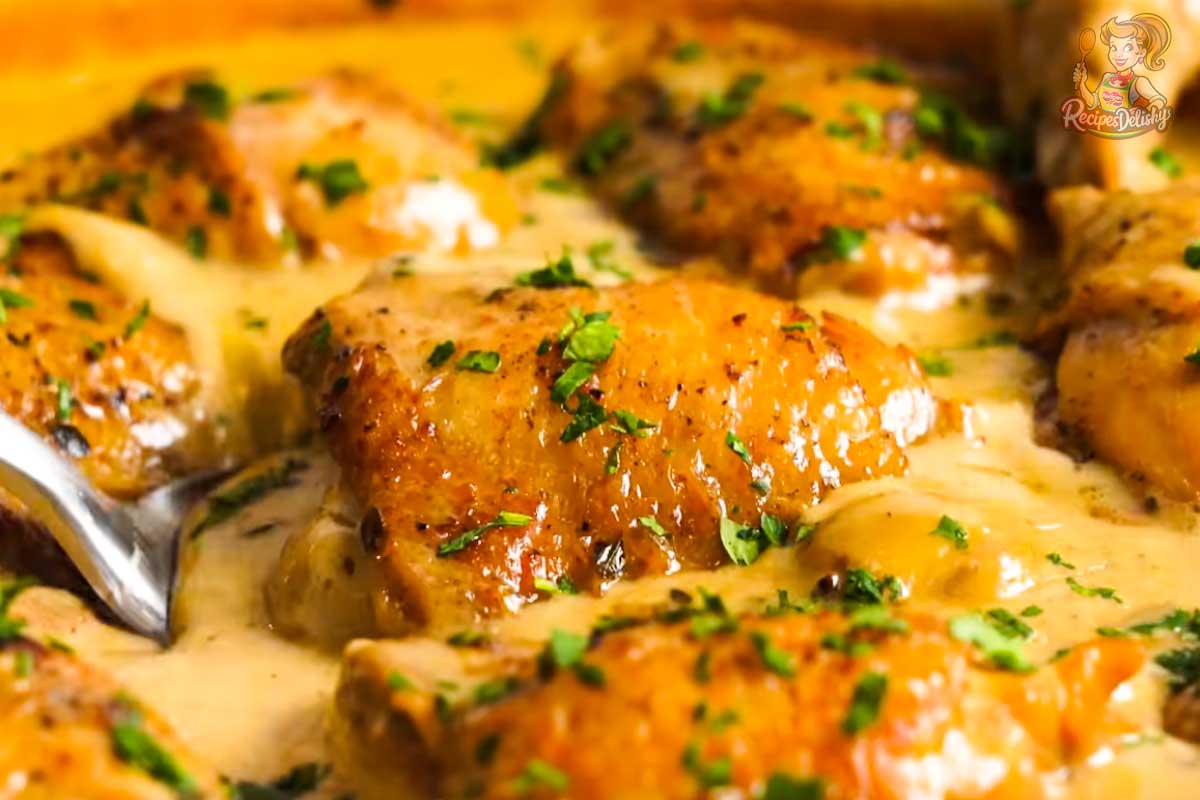Fricassee is a traditional cooking method that involves sautéing and stewing meat, often in a white sauce. This technique is revered across various cuisines for its ability to enhance the flavor and tenderness of meats like chicken, rabbit, and veal. Understanding the best accompaniments for fricassee can elevate this dish from a simple meal to a culinary delight. For those interested in exploring further, you can launch recipes that highlight the versatility of fricassee in combination with various side dishes.
Understanding Fricassee
Fricassee is not just a dish but a culinary technique that dates back to early European cooking traditions. It involves cooking meat cut into pieces, often without prior browning, stewed with broth and often vegetables and seasonings. This method ensures the meat remains tender and infused with flavors. The fricassee is iconic in both French and Creole cuisines, each adding its unique twist to this versatile dish.
- Historical Background: The term “fricassee” is of French origin, indicative of the method’s refinement in French cuisine.
- Common Meats Used: Chicken is most synonymous with fricassee, but other meats like rabbit and veal are also used.
For those eager to dive deeper into the fricassee cooking technique, a comprehensive guide is available on The Spruce Eats.
Classic Accompaniments for Fricassee
Choosing the right side dishes can turn fricassee into a heartwarming meal. Here are some classic accompaniments that pair beautifully with both the lightness and richness of fricassee:
- Rice Dishes: Plain steamed rice or a lightly seasoned pilaf can absorb the sauce’s flavors, making every bite a delight.
- Vegetables: Glazed carrots, sautéed mushrooms, or green beans almandine complement the textures and flavors of fricassee.
- Sauces and Gravies: A velouté sauce or a simple white gravy can be drizzled over both the meat and sides for added richness.
Discovering various fricassee recipes and their traditional sides is wonderfully detailed on Epicurious.
Regional Variations of Fricassee
Fricassee is enjoyed globally, with each region adding its unique flair based on local tastes and ingredients:
- French-Style Fricassee: This version often features morels and cream, and is typically served with artisan bread or buttered potatoes.
- American Adaptations: These are generally lighter and include herbs and root vegetables.
- Caribbean Influences: This style uses local spices and is commonly served with rice and peas.
Modern Twists on Traditional Fricassee
Chefs today are reimagining fricassee by mixing traditional methods with modern ingredients:
- Contemporary Ingredients: New versions might use less common meats like turkey or duck.
- Fusion Dishes: Some are inspired by other cuisines, such as a Thai fricassee with lemongrass and coconut milk.
- Gourmet Presentations: Chefs might present fricassee in a deconstructed style, highlighting the distinctiveness of each ingredient.
How to Prepare and Serve Fricassee
Cooking fricassee requires careful steps to maintain its status as a comfort food:
- Cooking Guide: Begin by sautéing onions and garlic, add the meat and seasonings, and then gradually mix in broth to simmer.
- Choosing Sides: Opt for side dishes that enhance the sauce’s delicate flavors.
- Presentation Tips: Serve in a deep dish and garnish with fresh herbs to boost both the flavor and look.
Further exploration of popular side dishes and presentation tips can be found on Food Network.
What is Fricassee Served With?
Fricassee, a staple of French cuisine, usually includes poultry or meat cooked in a creamy white sauce. It pairs well with various sides that enhance its flavor and texture. Popular choices include:
- Rice: Plain or wild rice are great as they absorb the sauce well.
- Potatoes: Choose from mashed, roasted, or boiled to complement the creamy sauce.
- Pasta: Light pastas like egg noodles or pappardelle match well with the thick sauce.
- Vegetables: Options like carrots, peas, or green beans add freshness.
- Salads: A crisp salad can offset the richness of fricassee.
- Breads: Bread or rolls are perfect for soaking up the sauce.
Understanding Fricassee: History and Basics
Fricassee is an age-old French cooking technique that involves sautéing meat and then stewing it in a creamy sauce. Traditionally made with chicken, the dish is also prepared with rabbit, lamb, or veal. The sauce, usually thickened with flour, broth, and cream, is essential to its character.
Perfect Pairings: Traditional Accompaniments for Fricassee
The ideal sides for fricassee should complement its flavor and texture:
- Rice Dishes: Plain steamed rice, lightly seasoned pilaf, or a wild rice blend are excellent choices.
- Vegetables: Options include glazed carrots, sautéed green beans, or roasted asparagus.
- Breads: A crusty French baguette or garlic bread makes sure you enjoy every bit of sauce.
- Potatoes: Whether mashed or roasted, potatoes are a filling addition.
- Sauces and Gravies: A velouté sauce or mushroom gravy can enhance the meal further.
Regional Variations in Fricassee Side Dishes
The side dishes for fricassee vary by region:
- In France: Commonly served with white rice or crusty bread.
- In the Caribbean: Often comes with rice and peas.
- In the Southern United States: Typically accompanied by creamy grits or homemade biscuits.
How to Select the Right Sides
When choosing side dishes for fricassee, consider:
- Balance the richness: Opt for sides that either complement or cut through the sauce’s richness.
- Complement the flavors: Match the sides with the herbs and spices in the fricassee.
- Texture contrast: Adding a crunchy side can enhance the overall dining experience.
Selecting the right sides is about achieving balance and harmony, ensuring every part of the meal enhances the others for a truly satisfying experience.
FAQs
What meats are typically used in fricassee?
Fricassee is most commonly made with chicken, but it can also be prepared with rabbit, lamb, veal, or even seafood. The choice of meat is often influenced by regional preferences and traditions.
Is fricassee a stew or a sauté?
Fricassee is a bit of both. The meat is usually sautéed initially, generally without excessive browning, and then stewed in a broth that often contains cream, resulting in a creamy, thick sauce.
What are the key ingredients in the sauce for fricassee?
A broth (chicken or vegetable), cream, and a thickener such as flour or cornstarch are typically included in the sauce. For additional flavor, herbs and spices like thyme, bay leaf, and garlic are commonly used.
How long does it take to cook fricassee?
Depending on the type of meat used and the size of the pieces, the cooking time for fricassee can vary. Typically, about 30 to 45 minutes are required to cook chicken fricassee through, while tougher meats like rabbit may take longer.
Can fricassee be made in advance?
Being made in advance often enhances the taste of fricassee, as it allows the flavors to meld. It can be stored in the refrigerator for a day or two and gently reheated without bringing the sauce to a boil to avoid separation.
Is fricassee suitable for special diets?
Various dietary needs can be accommodated by adapting the recipe for fricassee. A gluten-free thickener can substitute for flour in the sauce for gluten-free diets. For dairy-free versions, a plant-based cream can be used.
What are the best practices for achieving the perfect fricassee?
High-quality meat should be used, and it should be sautéed gently to keep it tender. To develop flavors without causing the dairy to curdle, the sauce should be simmered on low heat. Key practices also include regular stirring and careful seasoning.
These questions are addressed to assist both new and experienced cooks in understanding the basic aspects of making and serving fricassee, enhancing their enjoyment of this delicious dish.
Fricassee, a versatile and comforting dish, stands out in various cuisines. By pairing it with appropriate sides and mastering its preparation techniques, one can transform this traditional dish into a culinary experience worth sharing.

